By Louise Irvine
The ghoulish faces of jack-o’-lanterns are a familiar sight at Halloween. They were inspired by an Irish myth about Stingy Jack, who tricked the devil and was denied entrance to heaven and hell. Grotesque faces were also a specialty of the eccentric Martin Brothers, who sought inspiration from Roman myths about Janus, the two-faced deity. The devil is in the details, as they say, so let’s delve into these creepy ceramics at WMODA.
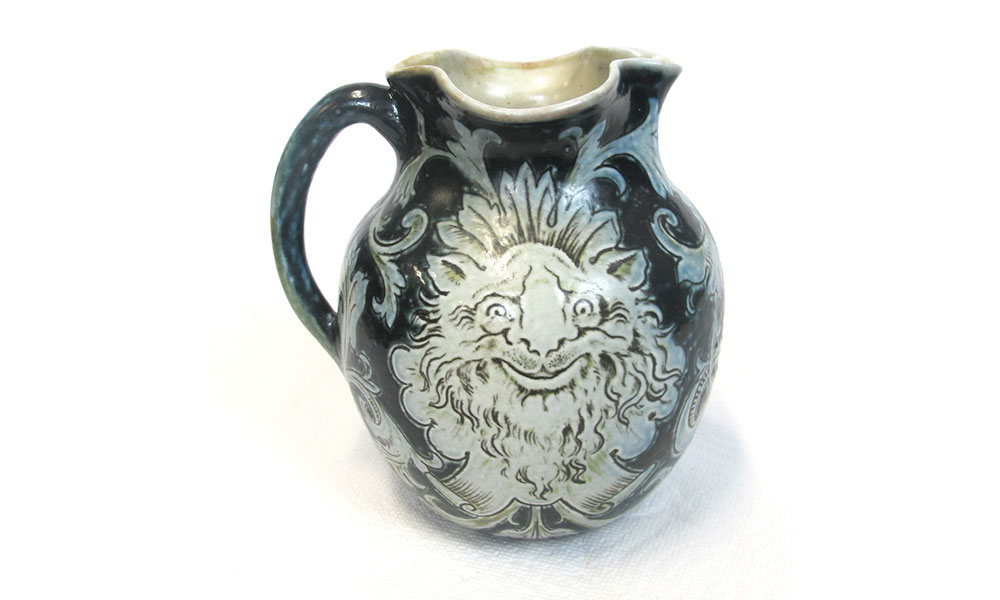
Martin Brothers Grotesque Face Jug
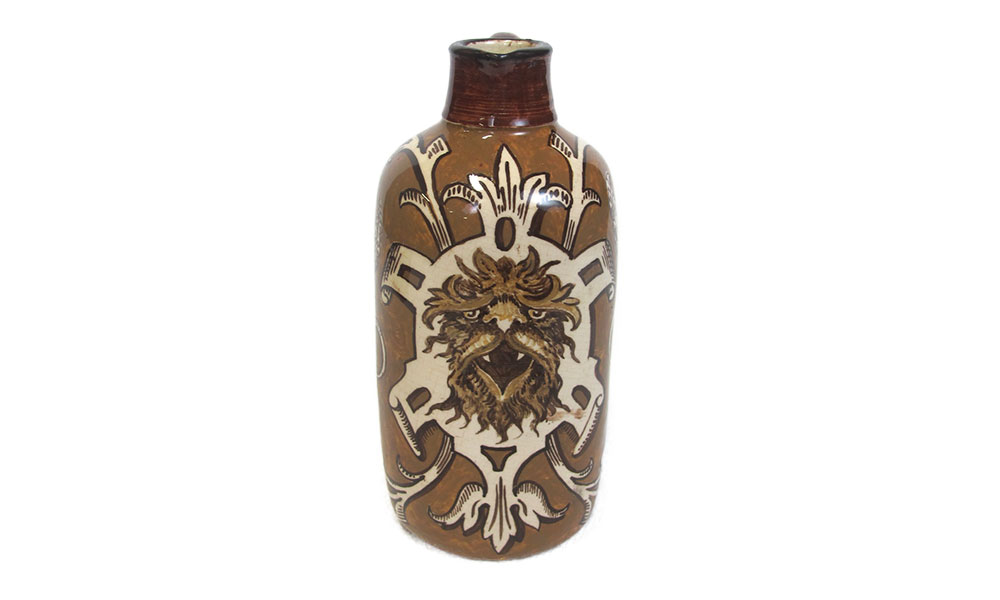
Martin Brothers Grotesque Face Vase
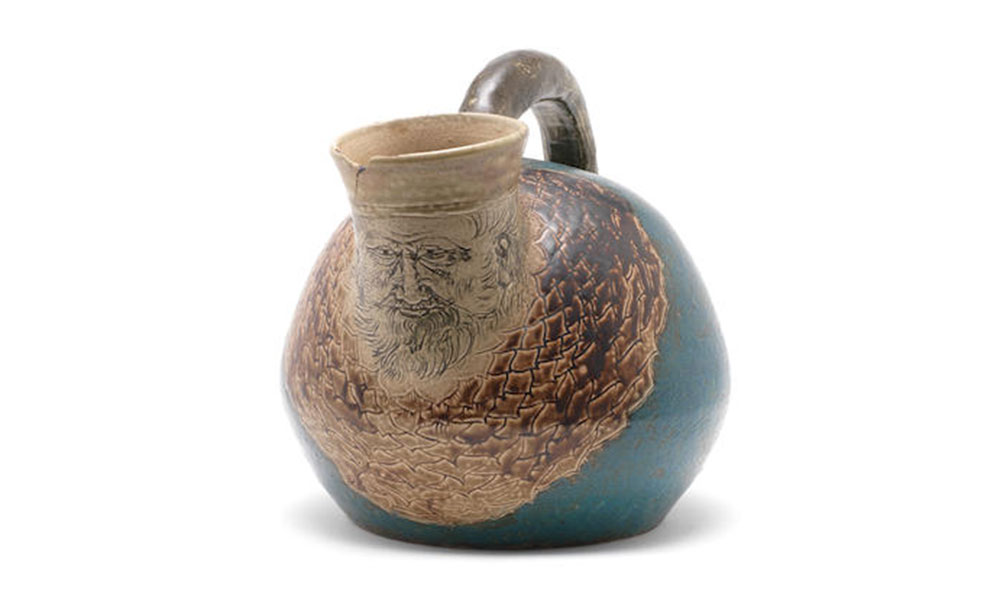
Martin Brothers Jug with Bearded Face
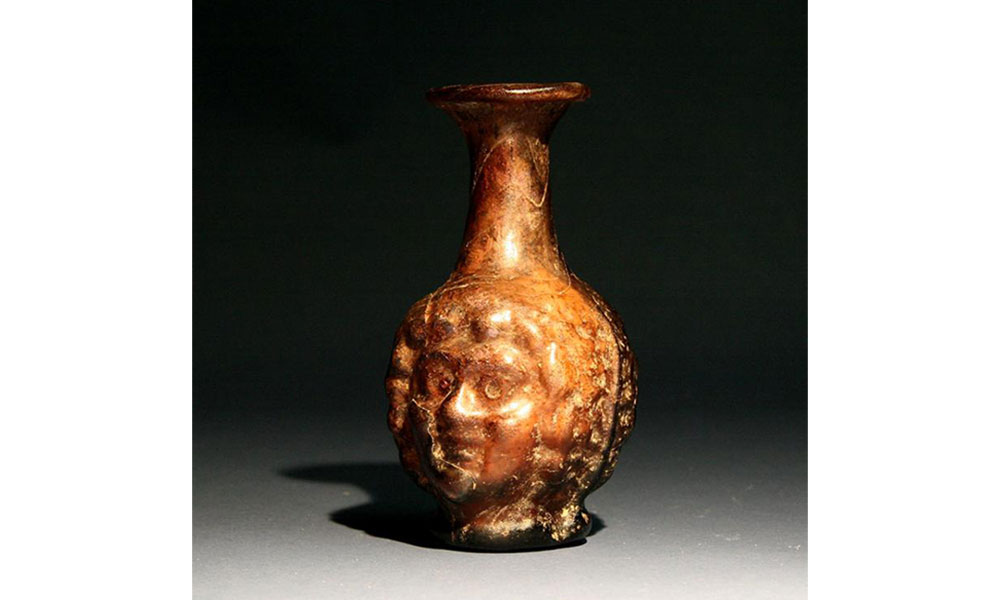
Roman Janus Flask
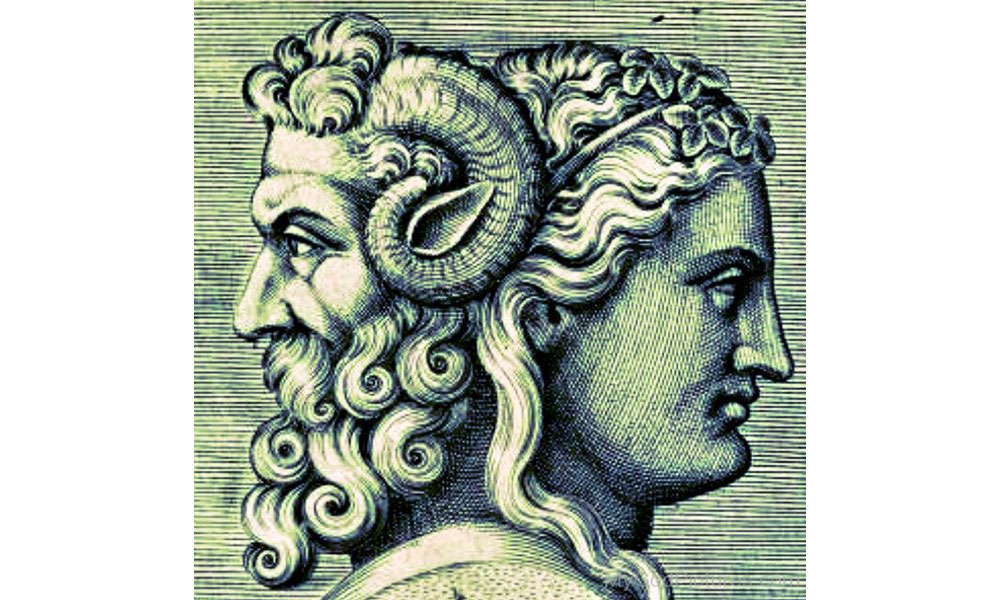
Janus Roman Deity
Throughout the centuries, Dionysian masks of Pan and Bacchus have been popular decorative motifs on many vessels. At their Southall Studio in London, the Martin Brothers studied these precedents from pagan antiquity and offered their interpretations in salt-glazed stoneware. They made bizarre vases and jugs with strange satyr-like faces shrouded in foliate forms. Their faces became increasingly sinister during the 1880s as can be seen in the WMODA collection.

Martin Brothers Mug front
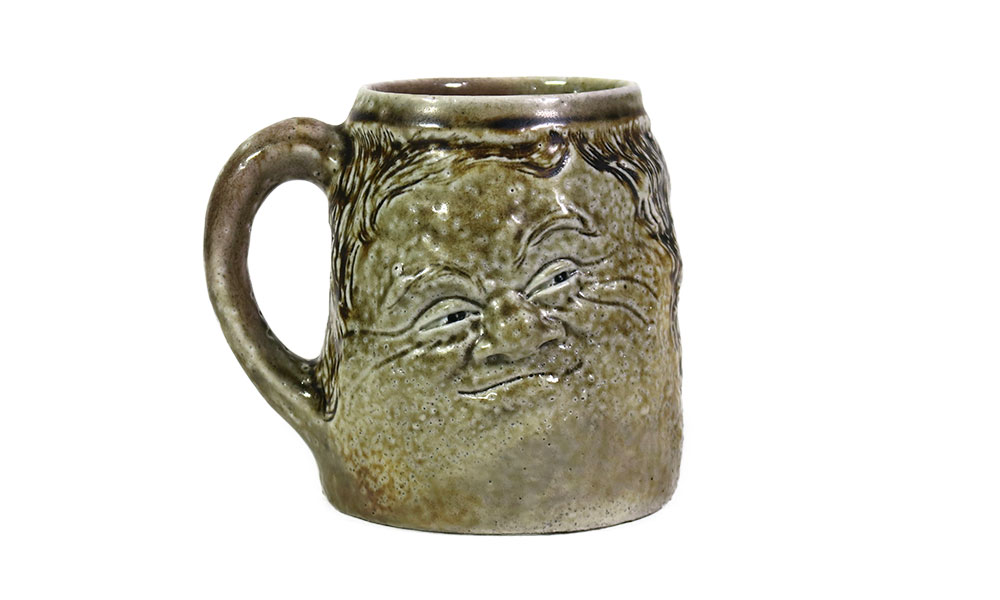
Martin Brothers Mug back
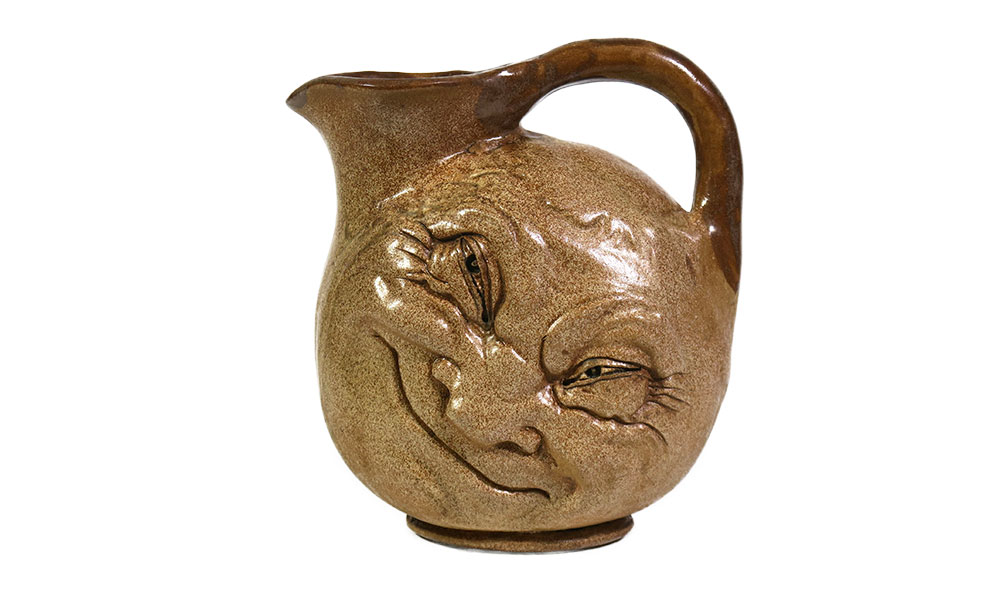
Martin Brothers Face Jug front
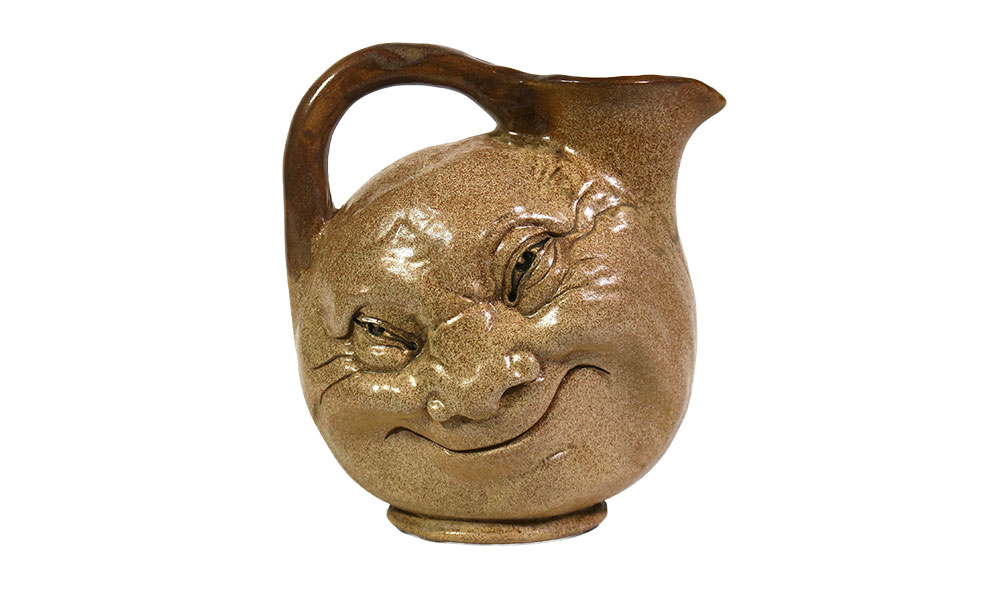
Martin Brothers Face Jug back
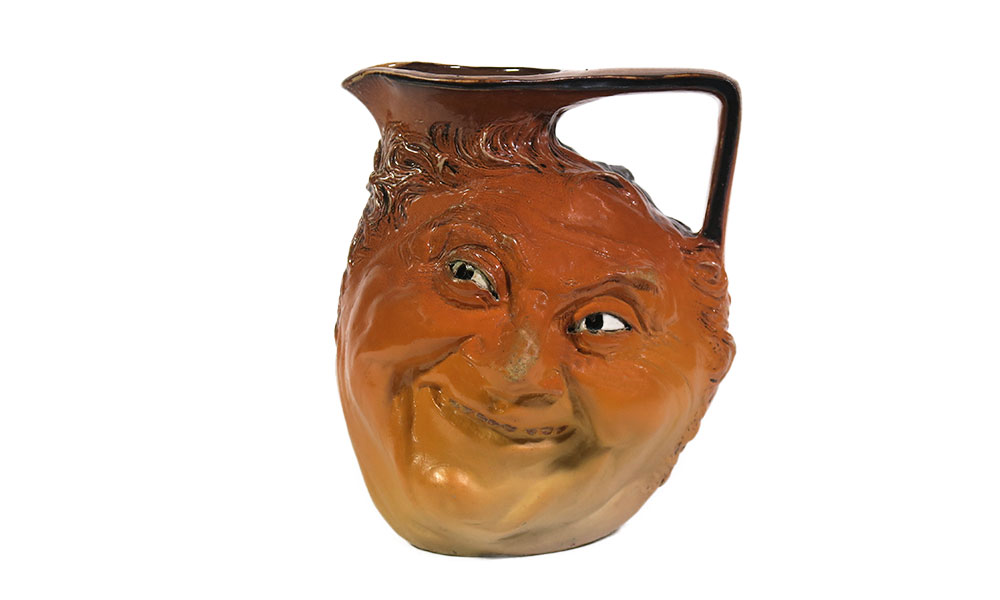
Martin Brothers Face Jug front
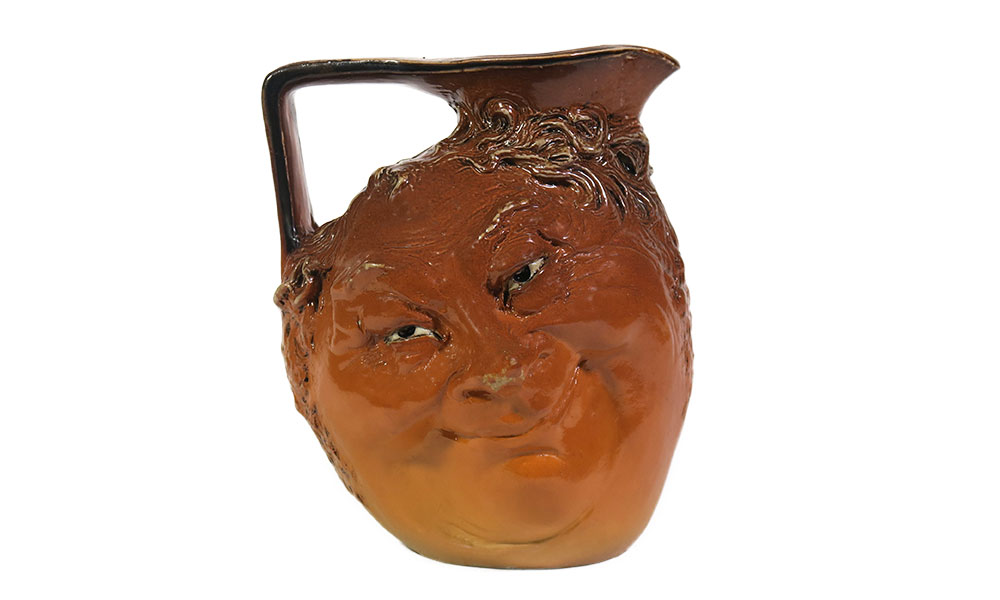
Martin Brothers Face Jug back
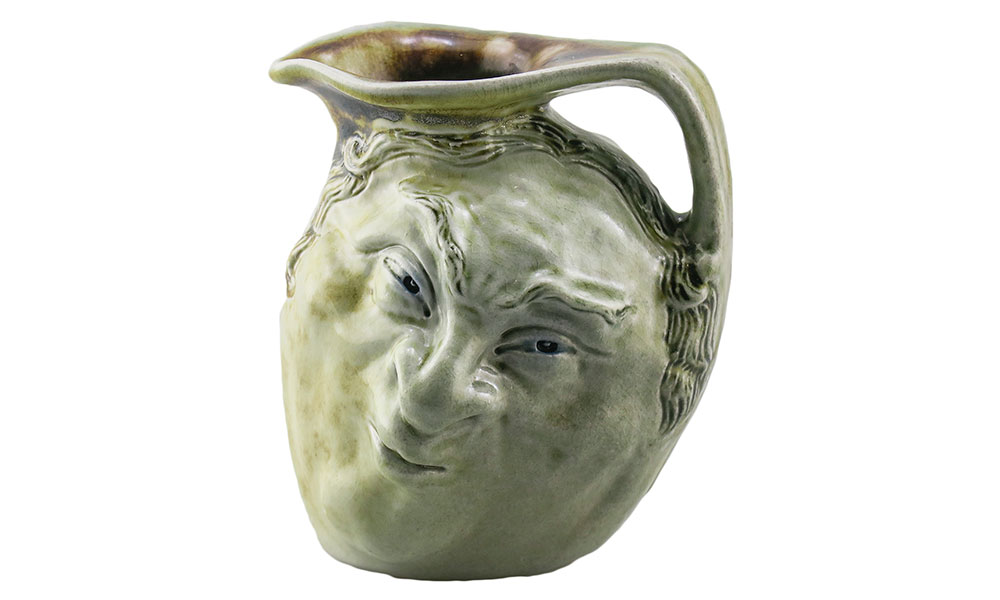
Martin Brothers Face Jug
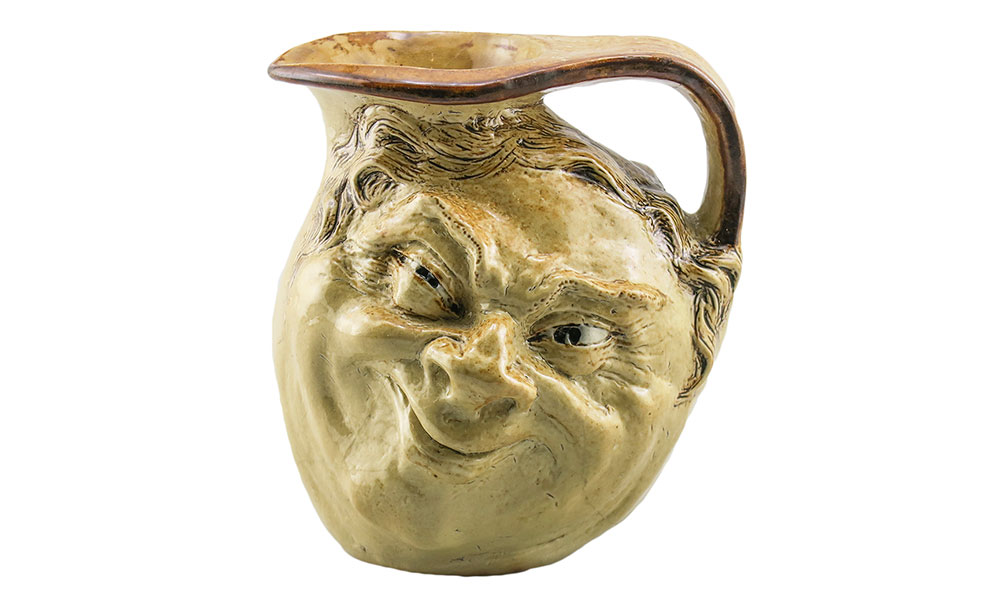
Martin Brothers Face Jug
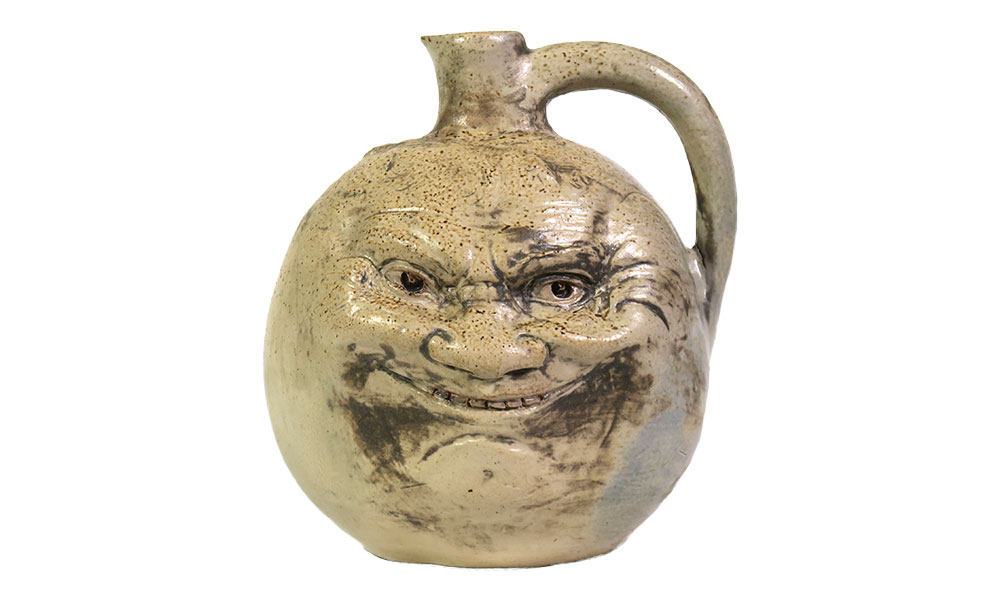
Martin Brothers Man in the Moon front
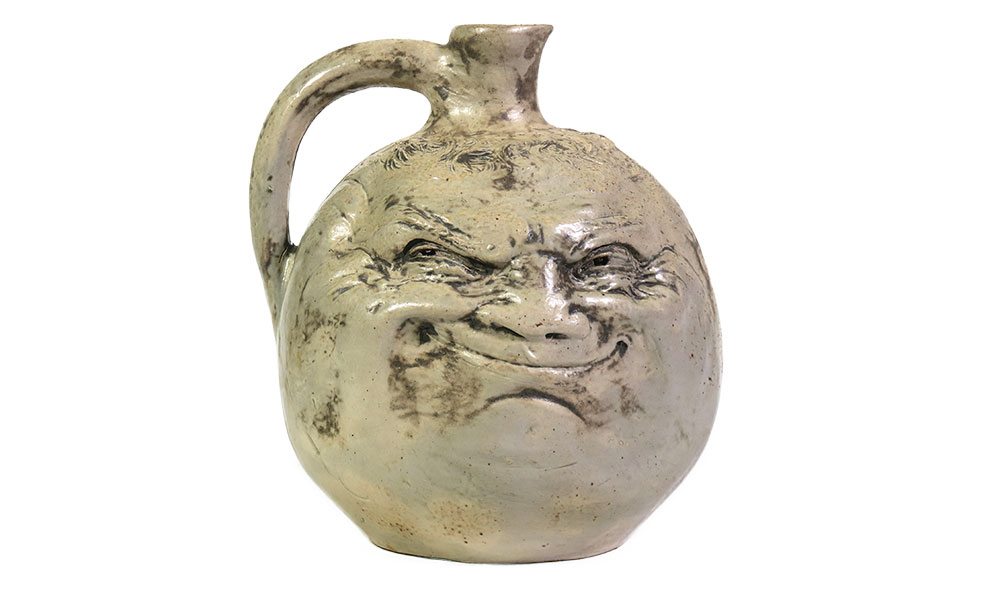
Martin Brothers Man in the Moon back
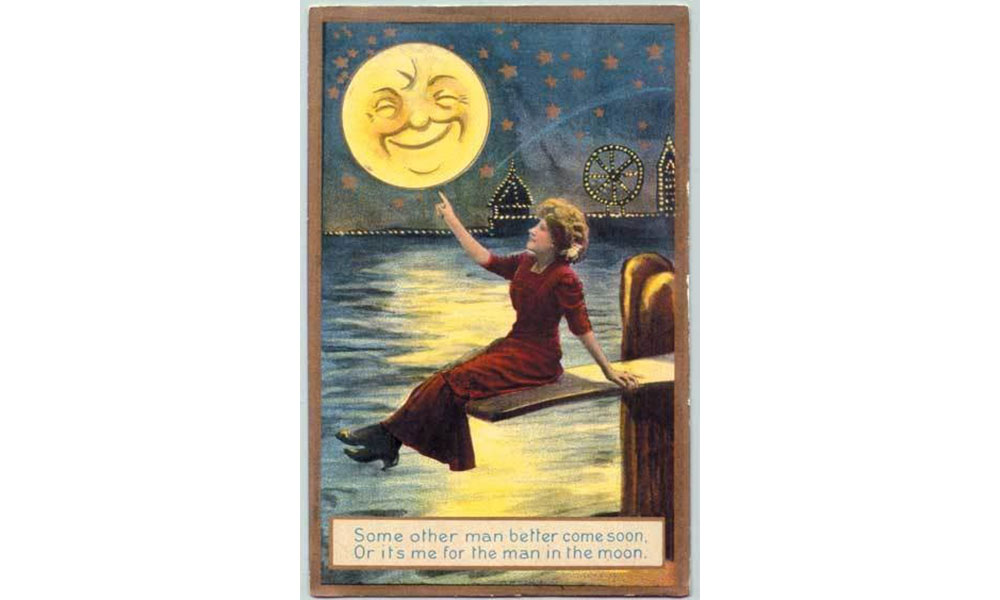
Man in the Moon Vintage Card
By the 1890s, Robert Wallace Martin’s favorite rendition was a double-sided jug with grimacing faces derived from ancient images of Janus. He is the god of beginnings, endings, and transitions, with one face looking to the future and the other to the past. According to Roman mythology, Janus was present at the beginning of the world and initiated human life. He ruled over weddings, births and deaths and oversaw seasonal events such as harvests and the new year. The month of January is derived from his name.
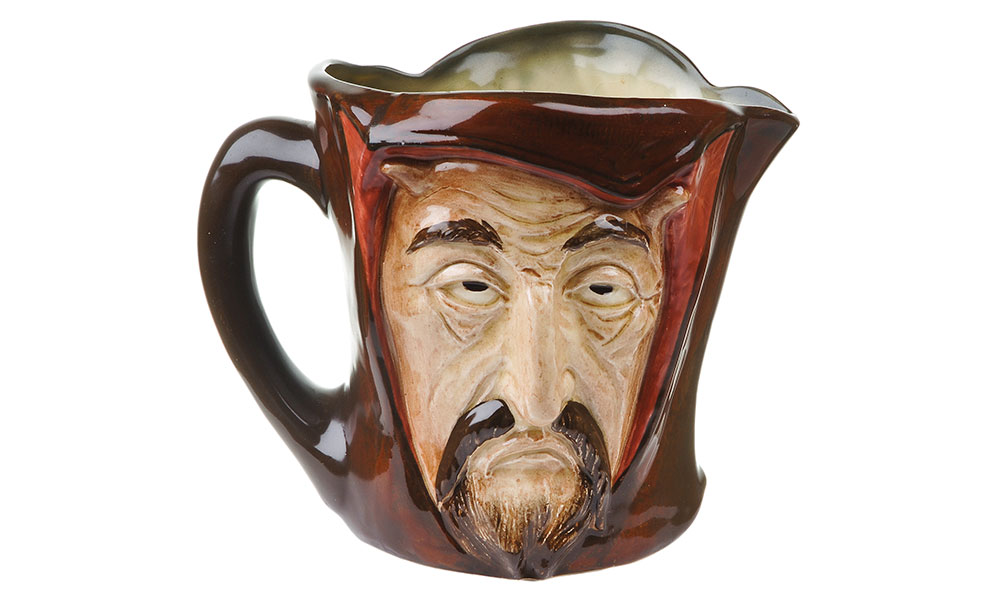
Royal Doulton Mephistopheles by C.J. Noke
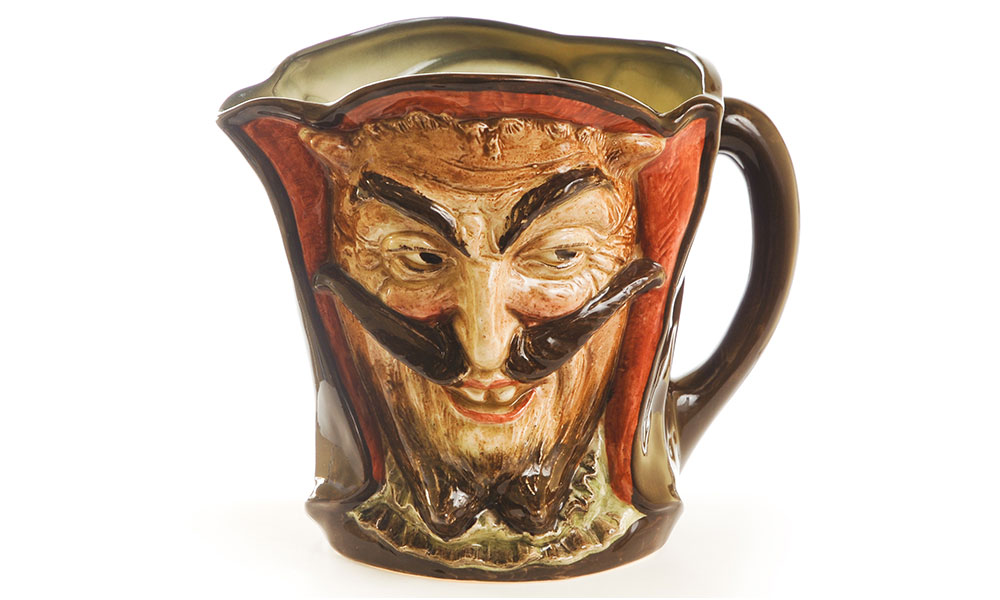
Royal Doulton Mephistopheles by C.J. Noke
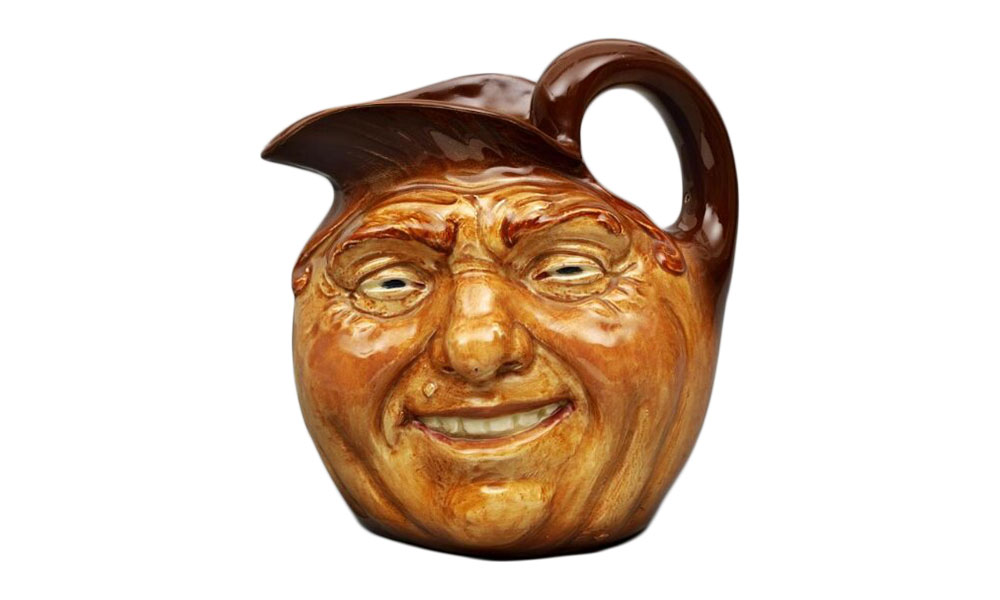
John Barleycorn by C.J. Noke
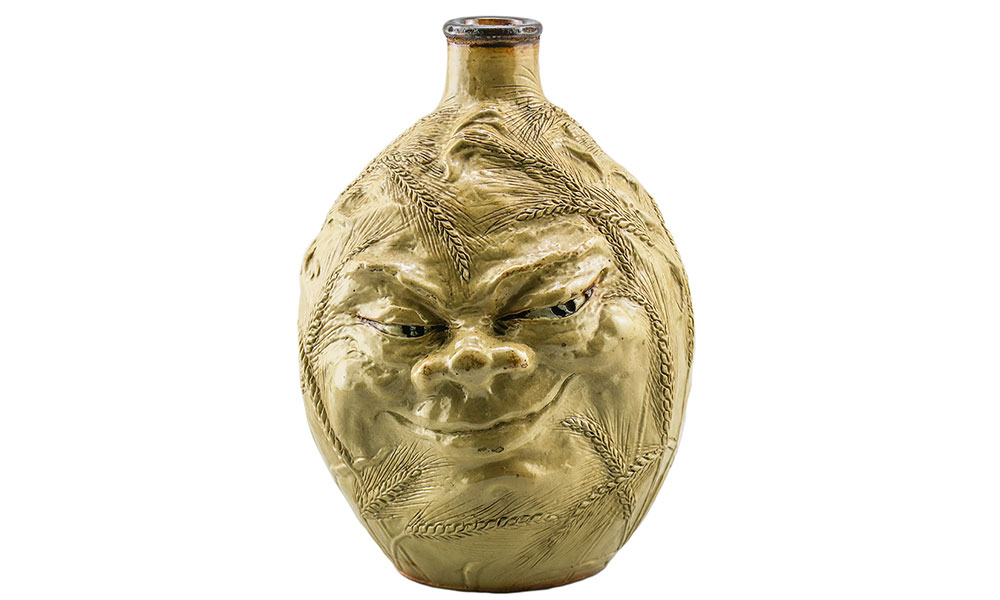
Martin Brothers John Barleycorn
Janus was often depicted on Roman glass flasks and drinking cups for ceremonial use, and his image can be seen on German stoneware from the Renaissance era, which in turn inspired the Martin Brothers. Their leering face jugs often have different expressions on each side, sometimes humorous, sometimes menacing. Controversial Victorian politicians were lampooned on these two-faced jugs along with caricatures of pillars of the community, including haughty barristers and overbearing judges. Brother Jonathan and John Bull, the personifications of America and England, were lampooned on a two-sided jug in 1898.
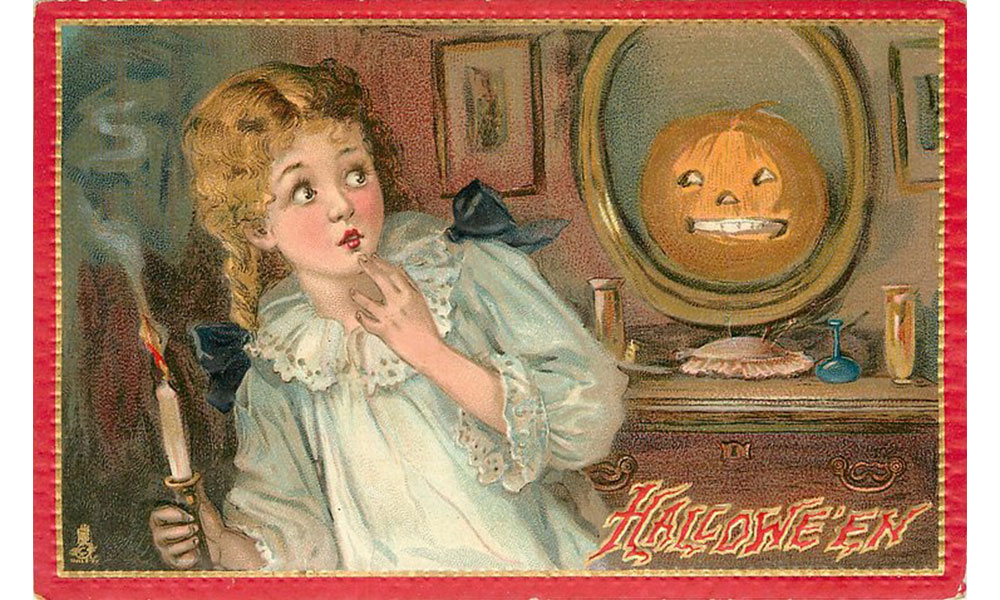
Raphael Tuck Vintage Card 1908
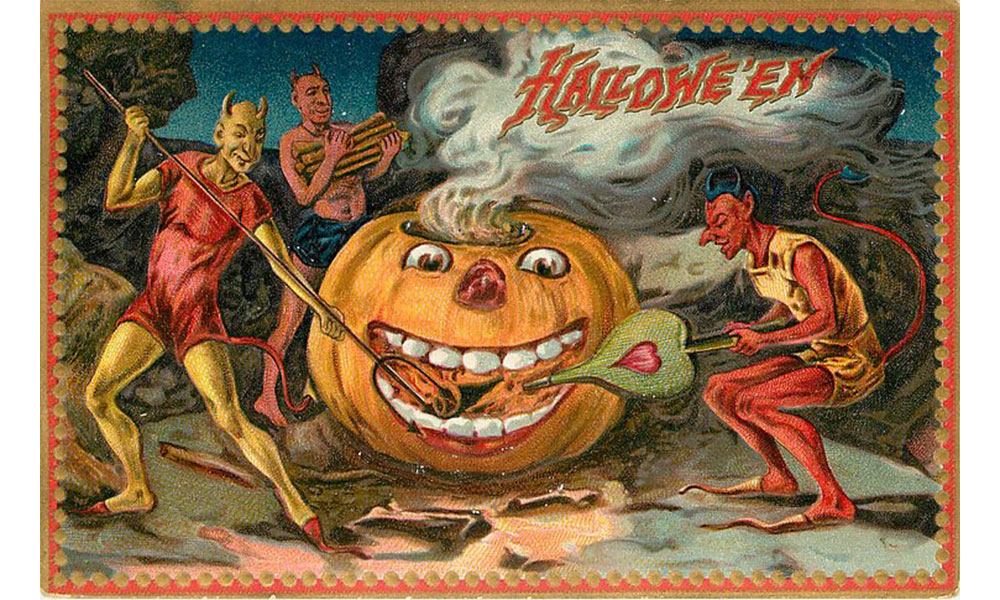
Raphael Tuck Vintage Card 1908
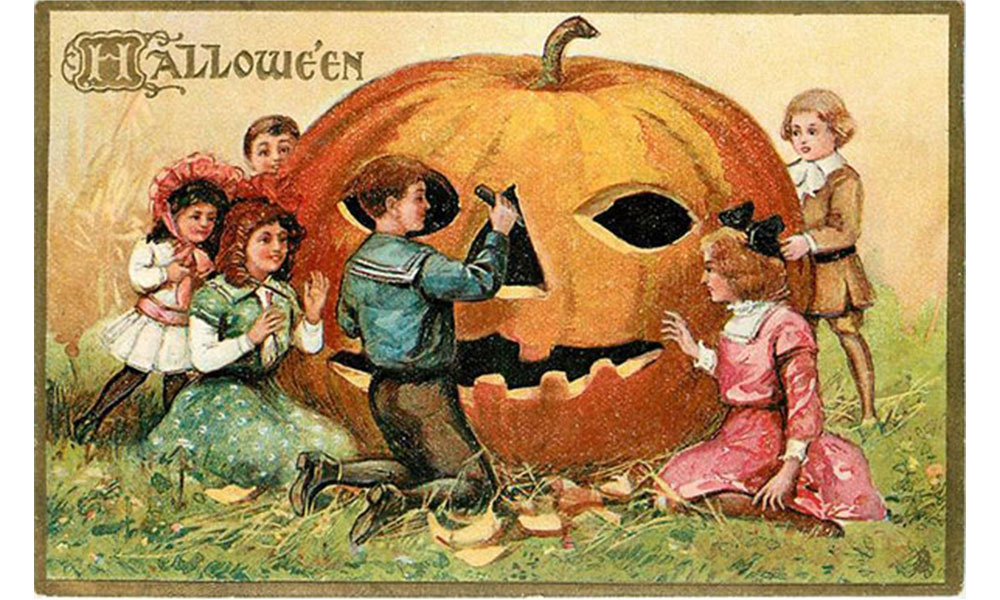
Raphael Tuck Vintage Card 1911
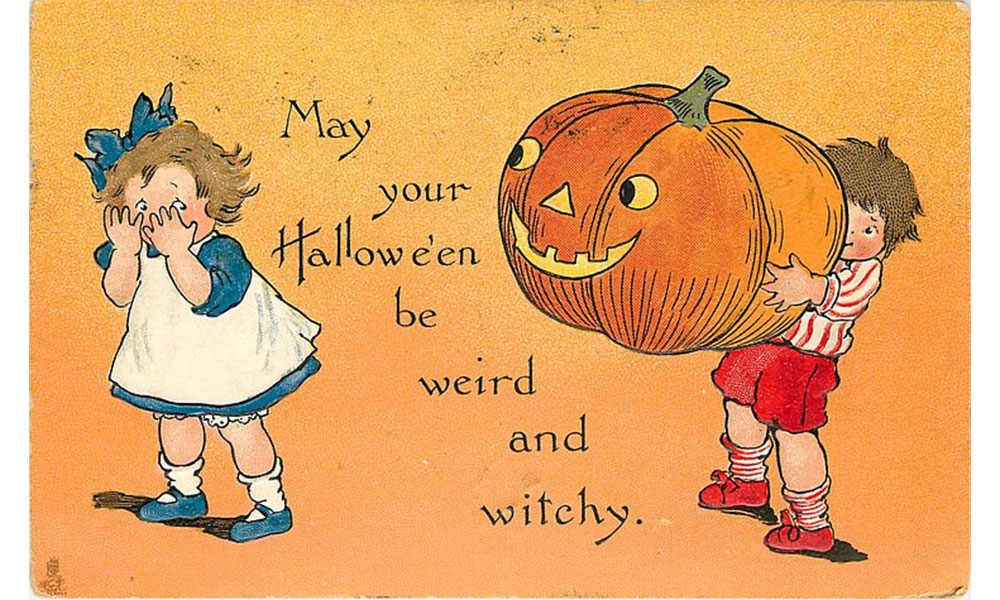
Raphael Tuck Vintage Card 1912
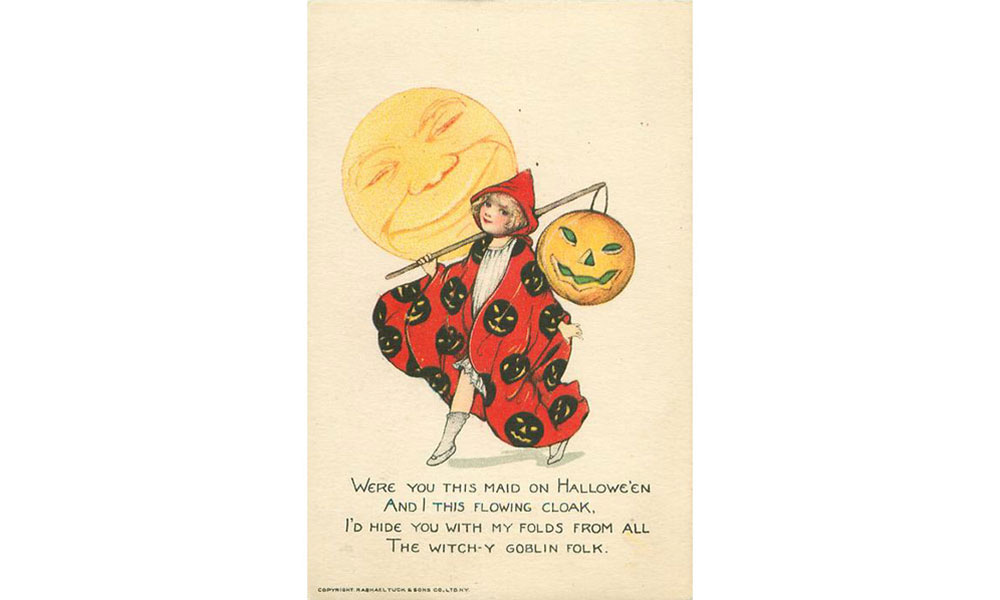
Raphael Tuck Vintage Card 1918
Some of Wallace’s face jugs resemble illustrations of the man in the moon. One of their strangest subjects was John Barleycorn, a symbolic representation of the barley crop, which is harvested each autumn to make bread, beer and whisky. He appears in a gruesome song by Robert Burns from the 1700s but has earlier pagan origins linked to the agrarian culture of the Celts and their Druid priests. Interestingly, John Barleycorn was the first personality portrayed by Charles J. Noke for the Royal Doulton character jug collection in 1934. Noke also introduced a two-faced jug of Mephistopheles with a devilish grin on one side and a scowl on the other.

Jack-o’-lantern Vintage Card 1908
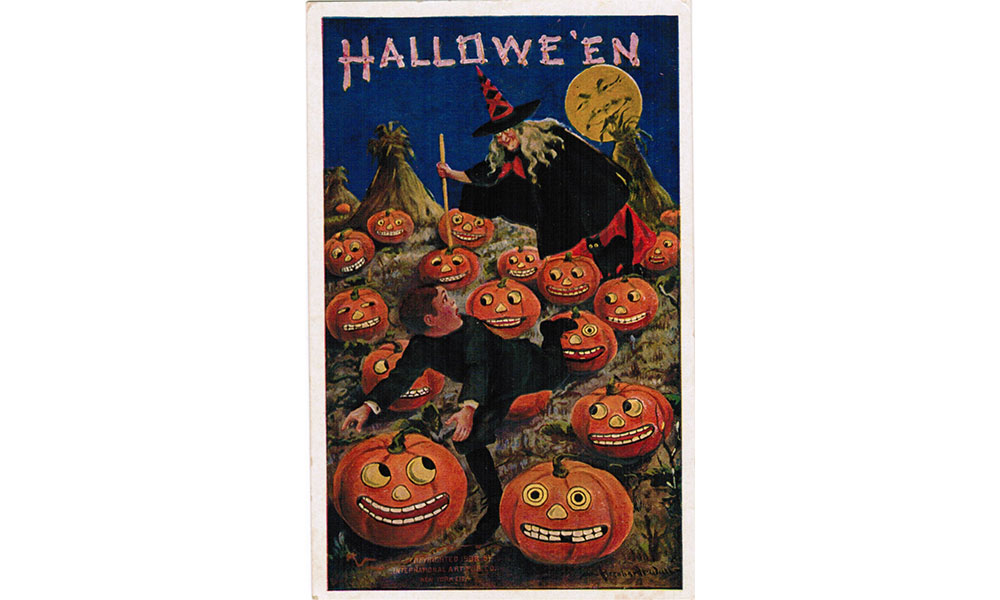
Vintage Halloween Card
The Devil is behind the Halloween tradition of the jack-o’-lantern, which was brought to the USA by Irish and Scottish immigrants in the 1800s. Originally, they carved scary faces on turnips, but in America, they preferred to use pumpkins, which were readily available and easier to carve. The lanterns were inspired by an Irish folktale about Stingy Jack, who tricked the devil. Initially, Jack convinced the Devil to drink with him and transform himself into a coin to pay. Jack kept the coin next to a silver cross which prevented the Devil from changing back and claiming his soul. On another occasion, Jack persuaded the Devil to climb up an apple tree to pick the fruit, but he carved a sign of the cross into the tree bark so that the Devil could not come down. When Jack died, God would not allow such an unsavory character into Heaven, and the Devil, still smarting from his tricks, would not let him into Hell. Instead, he condemned Jack’s ghost to wander the earth for eternity with only a burning coal to guide him through the darkness. Jack made himself a lantern out of a turnip named in his honor.
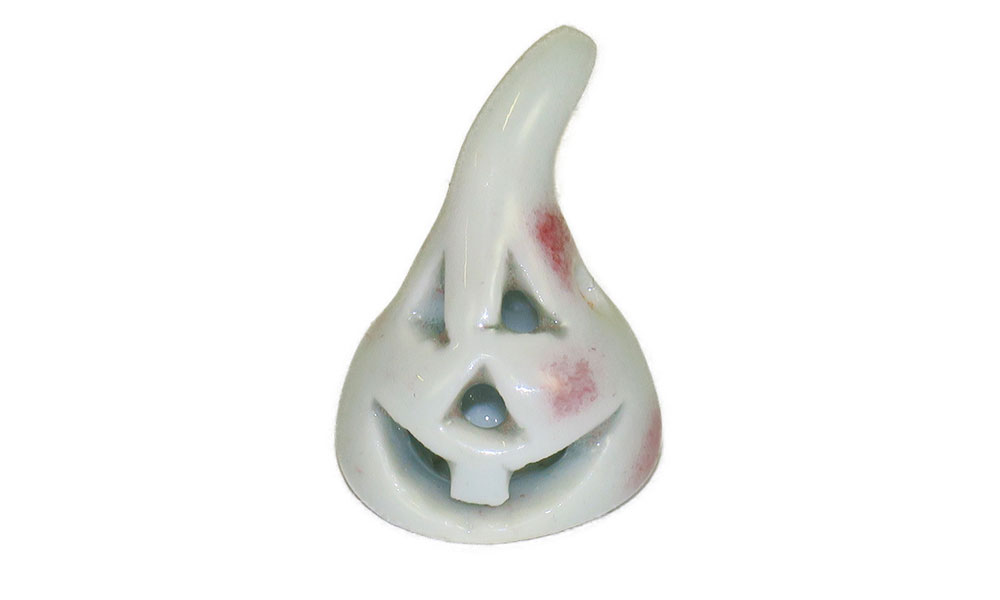
Mini Ghost by A. Meiklejohn
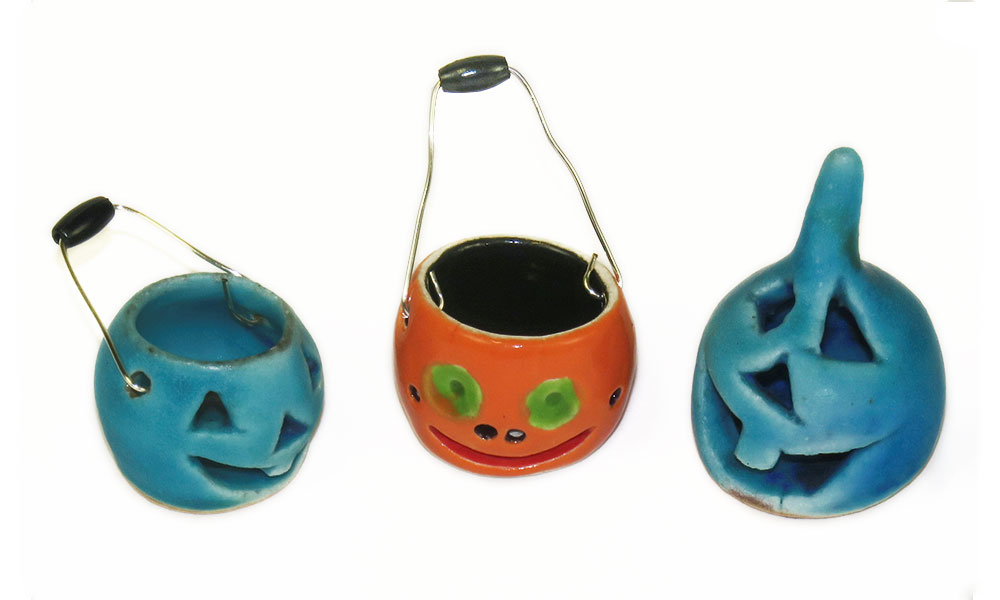
Halloween Miniatures by A. Meiklejohn
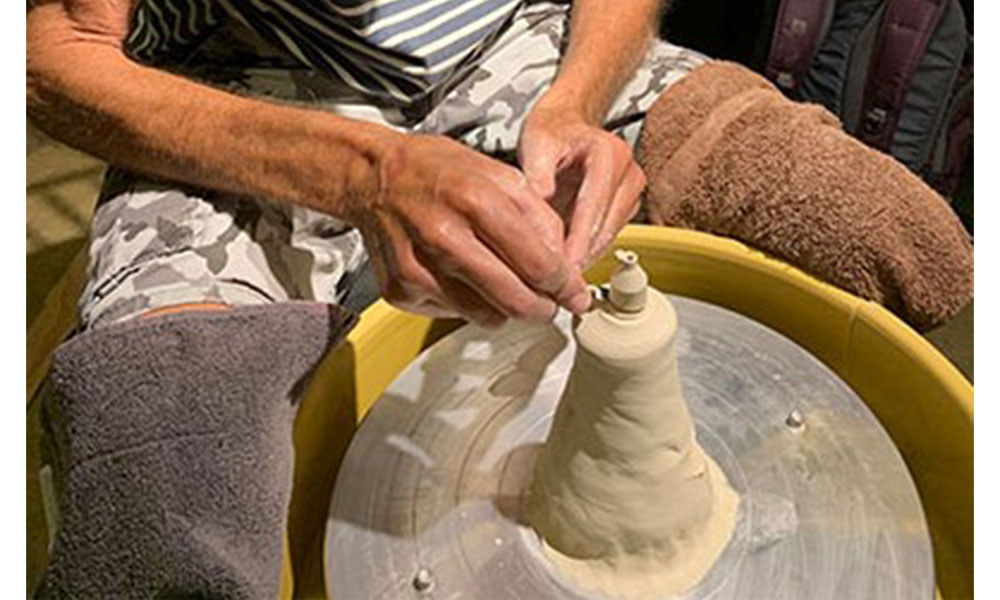
Alex Meiklejohn at work
Jack - o’- lantern images abound in Halloween cards made for the American market by Raphael Tuck in the early 1900s. Sometimes, the cards are macabre, with frightening pumpkins, ghosts, and devils, while other times, smiling pumpkins are carved by cute children. Miniature jack - o’- lantern ceramics are the specialty of Alex Meiklejohn, who throws his tiny pieces on the potter’s wheel. He also makes miniature ghouls and ghosts which make novel “Trick or Treat!” gifts for Halloween, a healthy alternative to candy. Contact the WMODA Museum Shop for details 954-376-6690.
Read more about the Martin Brothers
Creepy Creatures | Wiener Museum
Creepy Mugs – WMODA | Wiener Museum
Read more about Halloween traditions
